Calycoseris wrightii, White Tackstem
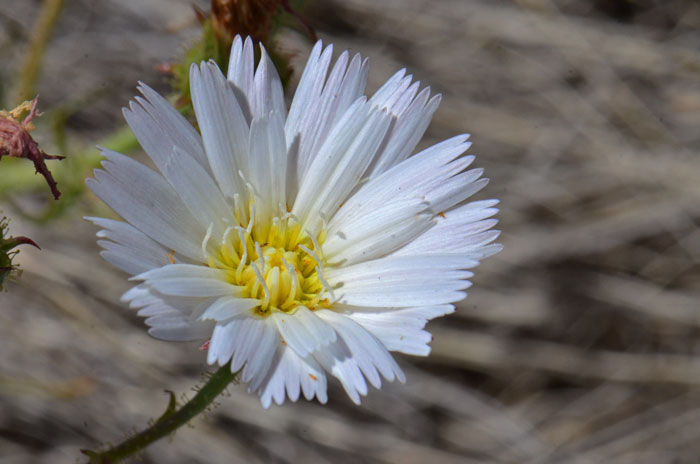
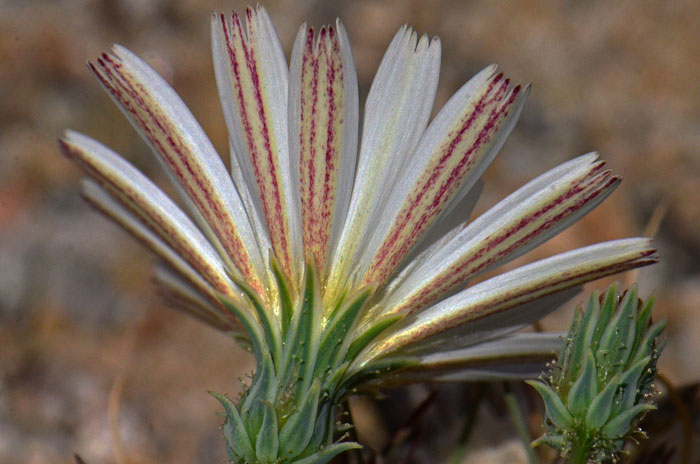
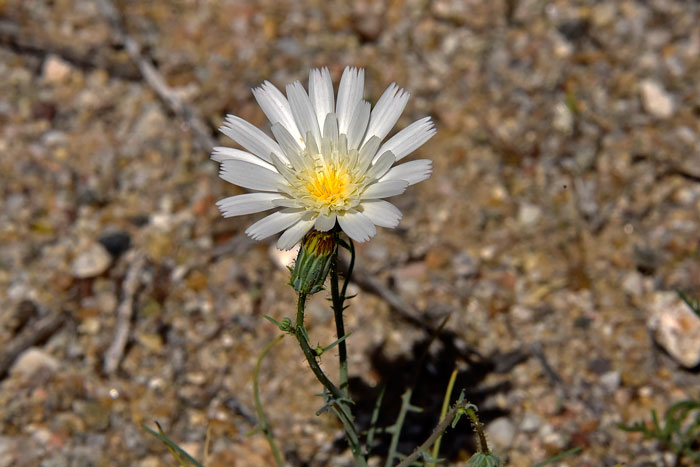
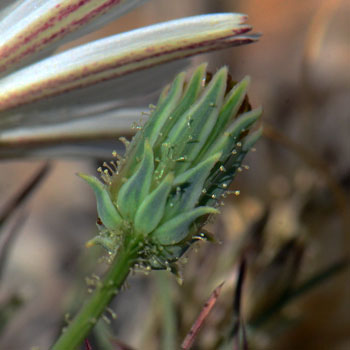
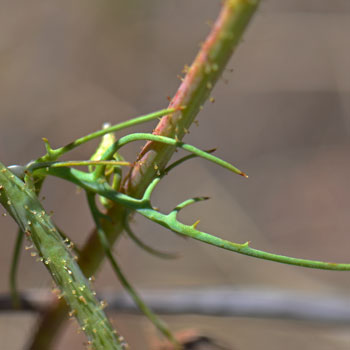
Scientific Name: Calycoseris wrightii
Common Name: White Tackstem
Also Called: Desert Chickory, Tackstem
Family: Asteraceae, Sunflower Family
Synonyms: ()
Status: Native
Duration: Annual, winter annual.
Size: Up to 12 inches 5-30 cm tall more or less.
Growth Form: Forb/herb; spring annual; low branching (1 to 3 stems); plants generally without surface ornamentation such as hairs, scales or bristles (glabrous) except for conspicuous light straw colored glands on upper part of stem and on the flowering parts; plants with milky sap.
Leaves: Green; leaves arranged alternately along stems; up to 4 inches (10 cm) long, fine, filiform and almost inconspicuous, leaves are pinnately divided, upper leaves greatly reduced to linear bracts.
Flower Color: White, purple-tinged below; showy, flowers 5-toothed strap-petals, (ligulate), fine red veins on bottom (abaxial) of strap; bracts surrounding flower heads gland dotted; fruit a brown, 5-ribbed and beaked cypsela with a pappus of smooth white hairs (bristles)
Flowering Season: March to May; March to June in California and Texas.
Elevation: 500 to 5,000 feet (150-1,600 m).
Habitat Preferences: Common on desert plains in caliche soils, desert washes, rocky mesas and slopes, stream bottoms, limestone gravels, pavement; often in creosote or mesquite associations.
Recorded Range: Calycoseris wrightii is found in the southwestern United States in AZ, CA, NV, NM, extreme western TX (El Paso County) and extreme southwest UT (Washington County). It is also native to Baja California and Sonora Mexico. In Arizona it is found in central, western and southeastern parts of the state.
North America & US County Distribution Map for Calycoseris wrightii.
North America species range map for Calycoseris wrightii:
North American range map courtesy of Virginia Tech, Dept. of Forest Resources & Environmental Conservation
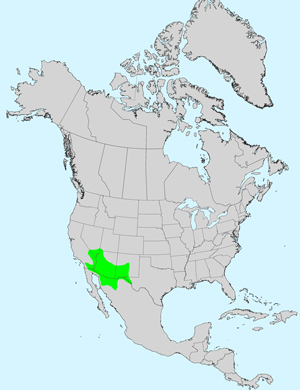
U.S. Weed Information: Unknown
Invasive/Noxious Weed Information: Unknown
Wetland Indicator: Unknown
Threatened/Endangered Information: Unknown
Genus Information: In North America there are 2 species and 2 accepted taxa overall for Calycoseris. World wide, The Plant List includes 2 accepted species names and includes a further 2 infraspecific rank for the genus.
The genus Calycoseris was published by Asa Gray in 1853.
In the Southwestern United States: Arizona, California, Nevada and Utah each have 2 species of Calycoseris, New Mexico and Texas each have 1 species. All data is approximate and subject to taxonomic changes.
Comments: White Tackstem, is considered to be one of the prettiest spring flowers in desert habitats. This species thrives in both the Mojave and Sonoran Deserts.
See White Tackstem, Calycoseris wrightii in the Sonoran Desert Naturalist, Field Guide, Arizonensis.
White Tackstem is similar in size and shape to the closely related Yellow Tackstem, Calycoseris parryi, which differs by its yellow flowers and with a greater preference for the Mojave Desert.
The genus Calycoseris was published by Asa Gray in 1853.
The specific epithet wrightii (wright'ii:) is named in honor of Charles Wright (1811-1885), an American botanical collector that collected plants and sending specimens to Professor Asa Gray at Harvard, eventually becoming one of his most trusted collectors. In 1851, with Gray’s help, Mr. Wright became part of the Mexican Boundary Survey, and helped collect many of the 2,600 species that were sent back to Professor John Torrey for description and identification. His name was honored by George Engelmann who gave it to a cactus, Opuntia wrightii.

